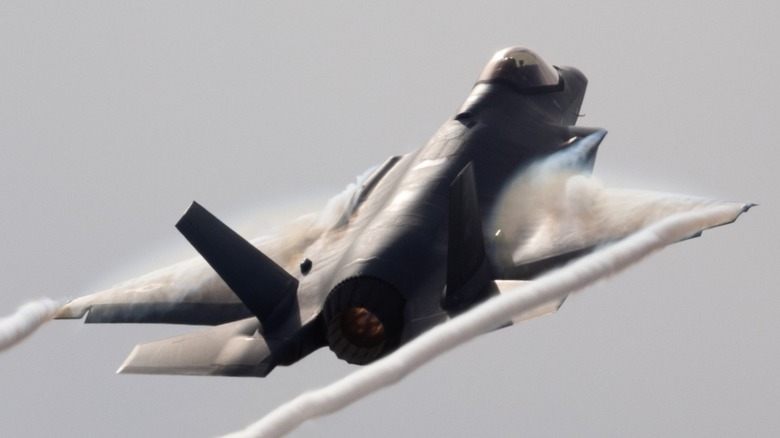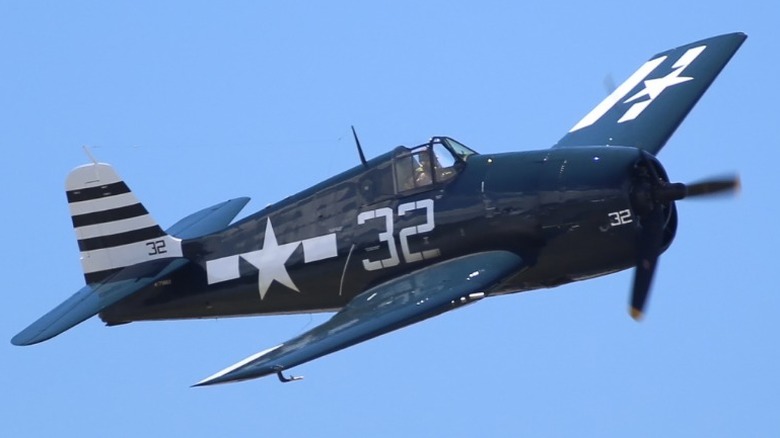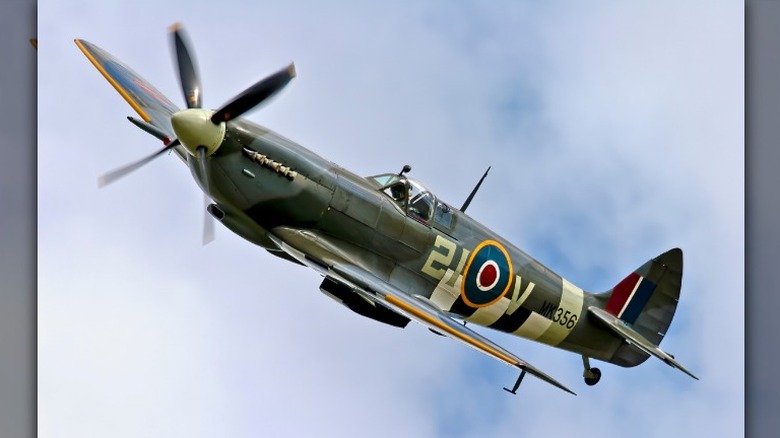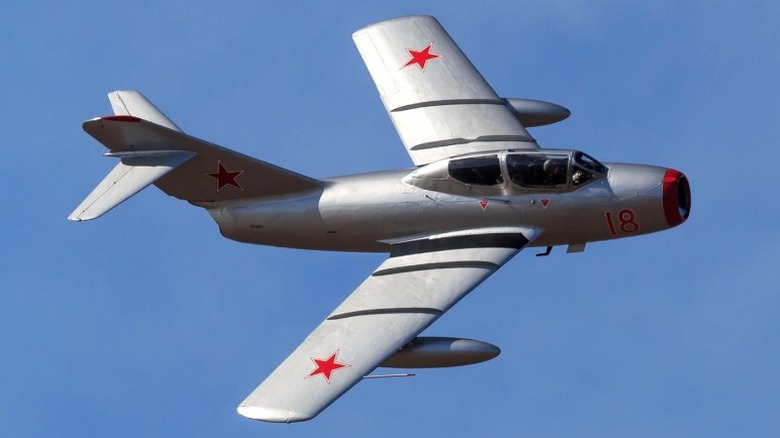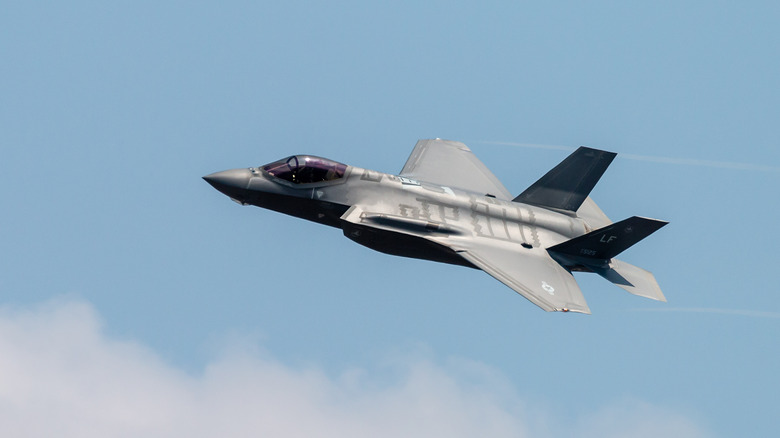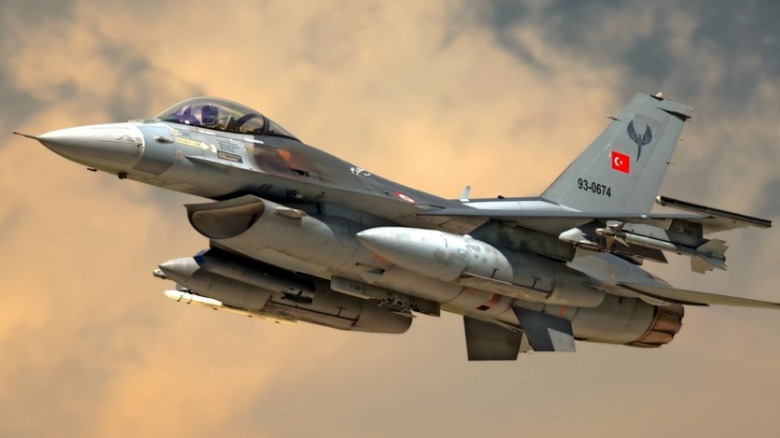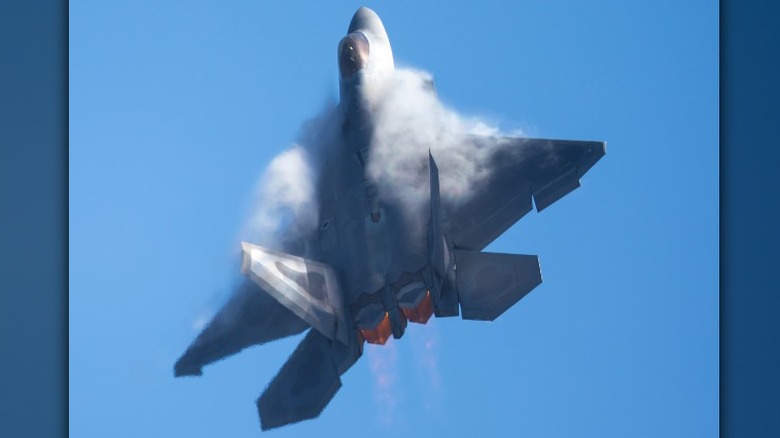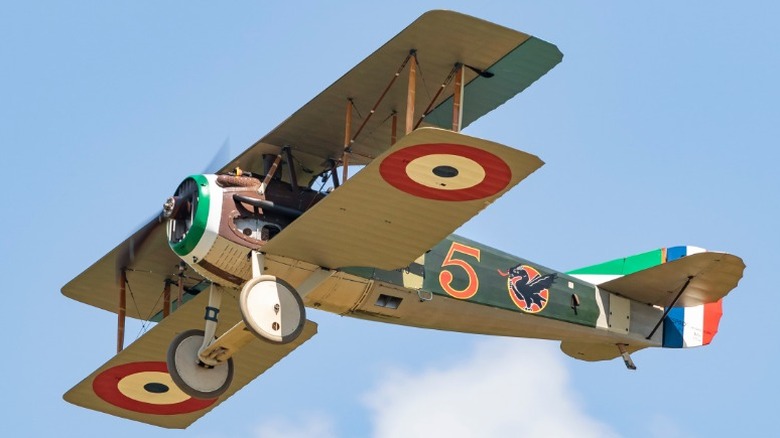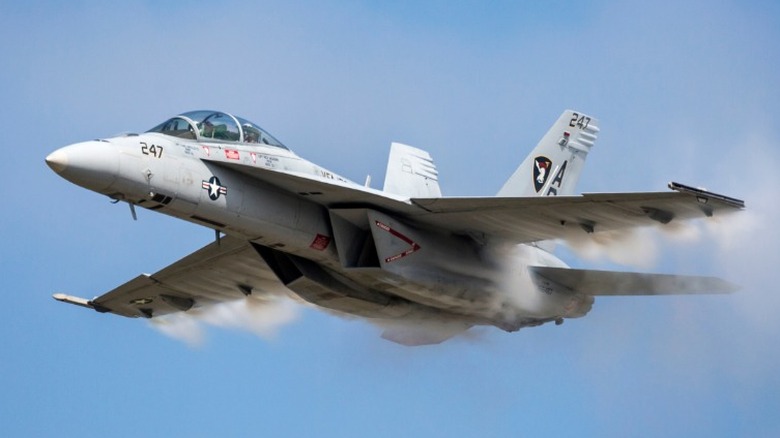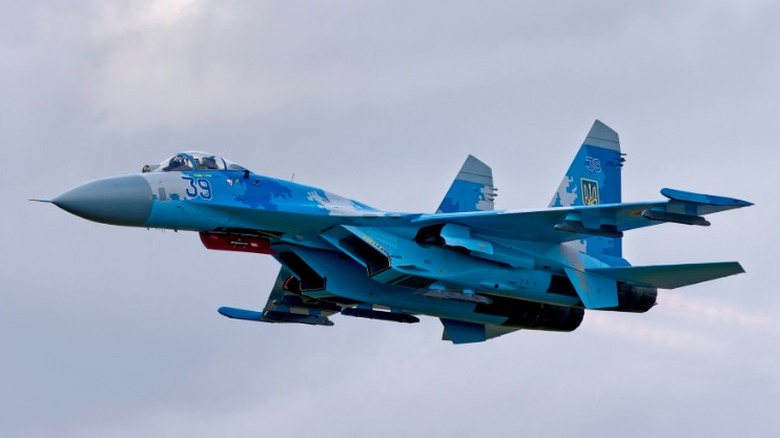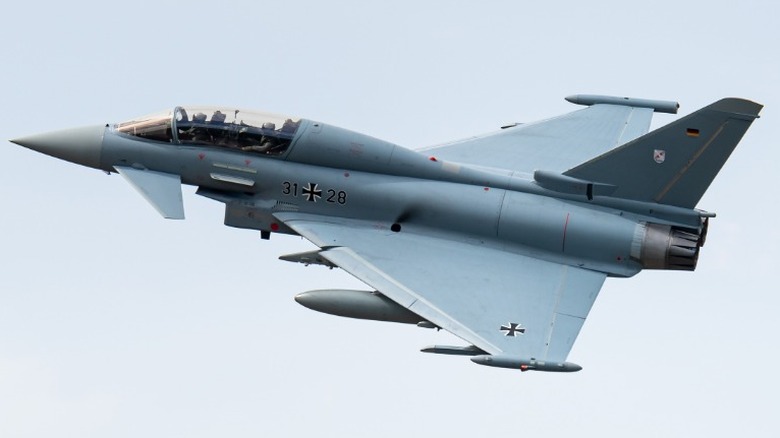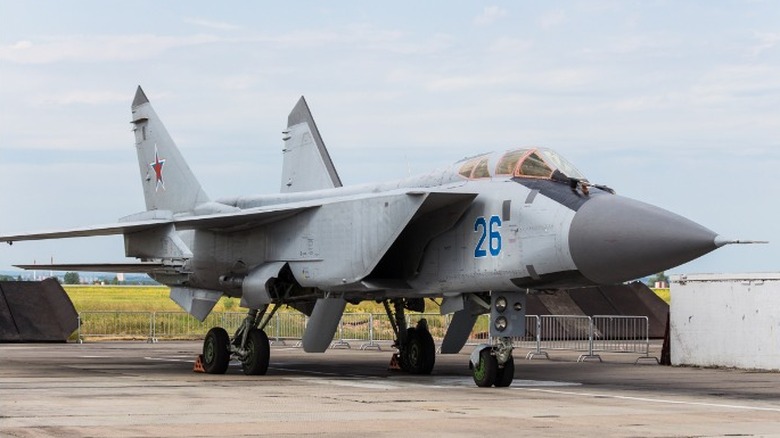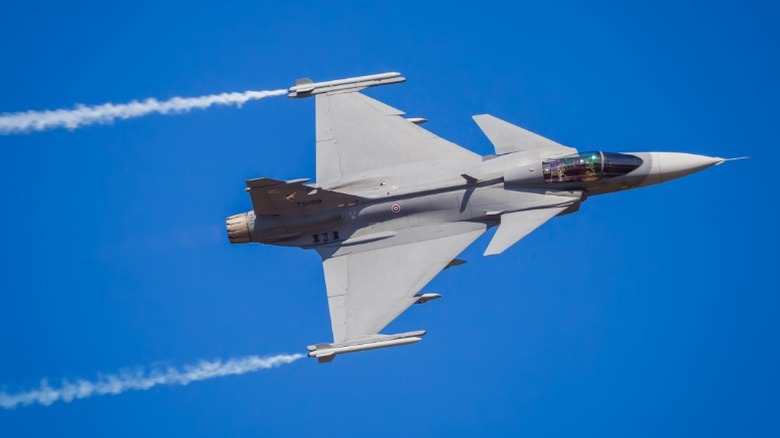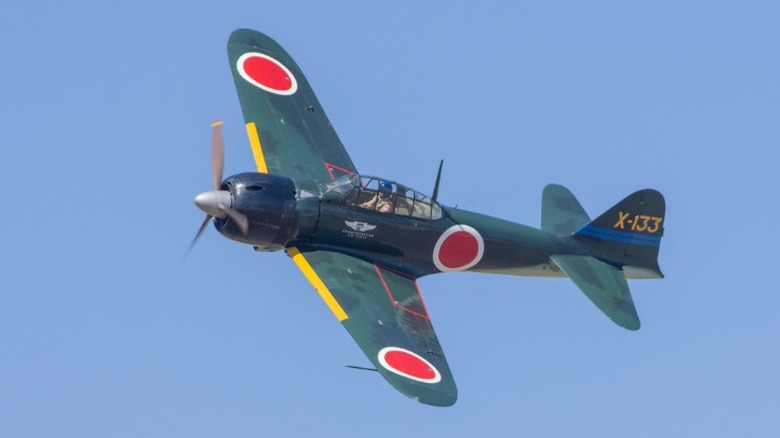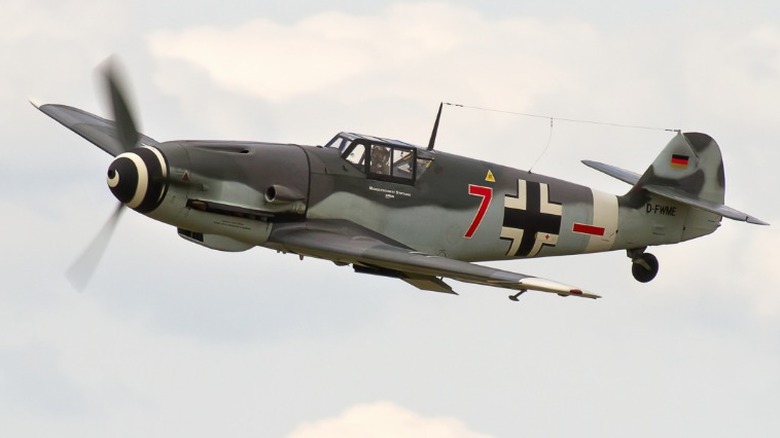14 Best Fighter Planes And Jets Of All Time
In the 100+ years of aviation history, aircraft have evolved with great speed as both militaries and private industry produce increasingly advanced and impressive engineering. Almost from the beginning, military leaders saw the potential to use aircraft to bolster a country's strength by augmenting ground forces with aerial weapons. That potential soon gave rise to the fighter plane. While the earliest military airplanes were only used for reconnaissance purposes, it was not long before Armies found ways to arm them with machine guns and bombs. This triggered the beginnings of aerial combat, indelibly changing war forever.
The fighter jets of the modern age are marvels of engineering and the merging of science and engineering. They have become symbols of a nation's strength and objects of wonder to millions worldwide. Produced only in the countries with the most advanced economies and the manufacturing base capable of such advanced manufacturing, the range of fighter jets and planes is quite impressive. Bearing in mind the continuous advancements of all the craft engaged in defense and countless armed conflicts over the years, here are 14 of the best.
Grumman F6F Hellcat
WWII put on display the mechanical might of the world's greatest militaries. The American effort contributed dozens of models of aircraft and thousands of individual units to the fight, but chief among the fighters was the Grumman F6F Hellcat.
In just 18 months, the Hellcat went from an idea to operational aircraft and was ready to enter into service by 1943. It was a carrier-based plane flown by a single pilot and propelled by a 2,000-horsepower Pratt and Whitney "Double Wasp" engine. The engine was an 18-cylinder air-cooled radial design with 45.9 liters fed by a Stromberg pressure carburetor and supercharger. It quickly became the Navy's primary front-line fighter and saw significant battles over the Pacific. The Hellcat boasts of the destruction of 5,203 Japanese aircraft while losing only 270 of the 12,275 total Hellcats built. It was also known for being the plane to produce the most "Ace" pilots, who were the most skilled and decorated dogfighters of the war.
The Navy accounts for up to 75% of aerial victories to the Hellcat. Its maximum speed of 376 mph along with excellent aerial maneuvering ability and a set of 6 .50 caliber machine guns (3 per wing) made it a formidable foe, helping ensure the defeat of fascism, authoritarianism, and tyranny. It is also fitting as the inspiration for one of the most powerful production American cars ever built, the Dodge Hellcat.
Supermarine Spitfire
While the United States entered WWII only after it was attacked at Pearl Harbor, the British had been fending off Germans since 1939. But before the Battle of Britain began, what would become the most famous of British warplanes was already under construction. This was the Supermarine Spitfire, which entered into service in 1938.
Unlike the radial engines used in the American Hellcat, the Spitfire is powered by a Rolls-Royce V12 Merlin engine. In early versions of this aircraft, the Merlin produced 1,175 horsepower, but that would be increased to more than 2,000 by the end of the war. While the design of the Spitfire is striking, it is all about flying and the Spitfire is an adept flier with excellent maneuverability that presented stiff competition against the incoming German fighters over the English Channel. The iconic semi-elliptical wings were an important feature that allowed for thin construction and efficient aerodynamics.
Without the Spitfire, the British may not have been able to defend the island as RAF fighters in these planes were crucial to denying the Germans entry into their country. Throughout production, designs were altered to improve the plane and by the end of the war, they were armed with up to eight machine guns with 300 rounds each. Few airplanes are as iconic of British resolve as the Spitfire and an excellent modern display of this can be seen in the Christopher Nolan film "Dunkirk," in which genuine WWII Spitfires were used in filming.
Mikoyan MiG-15
The first production jet fighter to be built in significant numbers was also a fierce competitor to its American counterparts of the time. The MiG-15 is a swept-wing single turbojet engine created as a high-altitude interceptor. Development began immediately after WWII on Joseph Stalin's orders and became possible from a sale of Rolls-Royce's new jet engines by the British. These engines were taken and immediately copied and revised for the new aircraft, which first entered service in 1948.
The Soviet MiG-15 proved to be a valuable asset to the Soviet Union and there would be more than 12,000 made, with many exported to countries around the world. The first of these jets to be used in action came in 1950 over the skies of Korea, which put American forces on high alert as the piston-engined planes in use could not come close to matching the speed and agility. American planes had been pushed out of the area early in the war, and only after the F-86 Sabre was rushed into production did the tides turn over the peninsula.
In a matchup between the MiG-15 and F-86 Sabre, the Communist has an advantage with faster climbing and can go up to 5,000 feet higher than the Yank. But at lower altitudes, its maneuverability wanes. Furthermore, American pilots were provided anti-G suits that prevented blackouts in high-G maneuvers while the Soviets were not. It is still an impressive bit and disarmed units can be occasionally found in private hands today.
F-35 Joint Strike Fighter
The F-35 Joint Strike Fighter is an undisputed king of the air. Born from a program by the Department of Defense to develop a new plane to replace the aging F-16 Fighting Falcon in the late '90s, the aircraft that would become the F-35 came from a design submitted by Lockheed Martin. The resulting project would be one of the most expensive aircraft programs ever undertaken and it produced the most advanced fighter jet ever built.
Several versions of the F-35 have been made, including a Navy version equipped with a mid-mounted fan allowing it to take off vertically and land without a runway. It's also a stealth fighter that uses a combination of the cleverly-designed airframe that does not reflect radar enhanced by a radar-absorbing coating. The stealth technology makes this 29,000-pound supersonic jet appear no larger than a golf ball to a radar. Part of this is also accomplished by keeping its missile payload within a compartment in the belly of the plane. For comparison, the most advanced fighter jet in the Russian fleet, the Su-57, has a radar signature of about half a square meter.
Weapons and flying capabilities aside, what makes the F-35 truly unique is its full complement of electronic warfare and communications equipment. Not only does it have incredibly sophisticated radar and electro-optical targeting systems, but it can also serve as a mobile communications hub transferring real-time information to and from ships at sea and other aircraft within the mission.
F-16 Fighting Falcon
Since it first entered service in 1977, the General Dynamics F-16 Fighting Falcon has represented the cutting-edge of supersonic fighter jets of the American military. While it's been surpassed by more technologically advanced aircraft, the F-16 is still a valuable asset in service today.
The F-16 was originally developed in 1972 as a lightweight fighter meant to help establish air superiority. It is a single-engine multi-role tactical fighter that is relatively small and light compared to other supersonic jet fighters. It was the first implementation of a fly-by-wire system, and despite its production beginning in the '70s, its avionics and weapons systems were and continue to be state-of-the-art. Because of its small stature and electronic flight controls, it is highly agile and can reach speeds of more than Mach 2 as well as pull 9-G maneuvers. Armaments include an M61 Vulcan cannon and has nine hardpoints from which a variety of missiles and bombs can be deployed.
Although the first prototypes rolled from the assembly line 50 years ago, the F-16 continues to be manufactured today. Lockheed Martin manufactures it in South Carolina and it has been made from production facilities in locations such as The Netherlands and Türkiye. Furthermore, it is widely used by American allies and various versions are in the service of the militaries in South Korea, Bahrain, Japan, and several more.
F-22 Raptor
Looking for a successor to the F-15 in the early '80s, a program for the next generation of fighter jets commenced in 1986. Taking advantage of lessons learned about stealth from the F-117 and B-2 Spirit, Lockheed Martin was able to design a fighter with a more traditional-looking airframe that achieved an extremely low radar signature about the same as a bumblebee. In the end, this program only resulted in the building of 195 aircraft, but they would end up as one of the best air-to-air combat jets ever created and they are still the best dogfighting planes in the American fleet.
Armed with a 20mm cannon and three weapons bays capable of carrying infrared air-to-air missiles. Radar-guided missiles, and 1,000-pound JDAMs, this $143 million aircraft is a formidable foe. The two Pratt & Whitney turbofan engines provide powerful thrust, but their torque-vectoring nozzles add extreme agility. Another advantage of the F-22 is Supercruise, which enables the aircraft to cruise at speeds of more than Mach 1.5 without the use of afterburners, dramatically saving fuel and extending its range. The F-22 was the first American fighter jet built with this capability and remains the only one in its fleet.
The F-22 electronics include a wireless data link to transmit operational information to other aircraft in a formation without needing to convey anything over the radio. Cockpit screens, heads-up displays, and night vision goggles are also among the features of this aircraft that make it a superior fighter.
Spad XIII
WWI was the first armed conflict in which the use of airplanes became a significant part of the fighting. Although the technology was barely more than a decade old, it became crucial to the war effort on both sides. The bi-plane was the most common airframe used in this conflict, and one of France's superior models was the Spad XIII.
By 1918 and the war's end, France had built 8,472 copies of this plane. Powered by a Hispano-Suiza water-cooled V8 engine with up to 235 horsepower, the Spad XIII was a powerful craft used to great effect by many brave pilots and helped to establish the role of aviation in armed conflict. It came armed with two Vickers .303 machine guns and had a top speed of 135 mph, which was fast for the day. Its service ceiling of 21,185 feet was also an advantage, and this plane is the model that turned many pilots into what are called "Aces," including American Ace Eddie Rickenbacker, who scored 26 hits in a Spad during the war.
This was France's principal fighter plane and was used not only by the Allies during the war. When the U.S. entered, it had no fighter plane of its own ready, and this one became the primary choice of the Army Air Service. While planes have changed drastically over the last century, all of them have a direct lineage back to this.
F/A-18 Super Hornet
The Navy's primary strike and air superiority carrier-based aircraft is currently the F/A-18 Super Hornet, which is an updated airframe to the F/A-18 Hornet that joined the fleet in 1984. Congress chose to upgrade an existing design rather than build something from scratch, and that resulted in an airframe that is 20% larger and equipped with the latest avionics, targeting, and communication systems. It is a fast and agile supersonic aircraft with a top speed of Mach 1.7 and a range of 1,275 miles. With a dozen hardpoints and configurations to carry up to 27 different weapons or additional fuel tanks, the Super Hornet is a fearsome machine. Reusing an existing design meant it could not be a stealth aircraft, but designers incorporated stealth technology in as many ways as possible, leading to a significantly reduced frontal radar cross-section.
The greatest benefit of having this jet in the Navy's fleet comes down to cost. Compared to the F-14 Tomcat also operated by the Navy, the Super Hornet reduces cost per flight hour by 40% and the labor requirement per flight hour is also reduced by up to 75%, figures that are golden and almost unheard of in the Navy. To see one of these planes in action, the best way is to catch a show featuring the Blue Angels, a team of ace pilots with a squadron of Super Hornets in distinctive blue livery who perform aerobatic maneuvers at air shows. It is worth a drive.
Sukhoi Su-27
With its introduction in 1985, the Sukhoi Su-27 was one of the last fighter jets built by the Soviet Union, although it is still in use today. It is an advanced aircraft with an airframe made of titanium and high-strength aluminum, with dual turbofan engines that push it to a maximum speed of Mach 2 and fly at up to 62,000 feet.
When it was first designed, the focus was to counter the American F-15. Soviet aircraft of the '70s and '80s were highly advanced and the Su-27 features many cutting-edge technologies that have been continuously upgraded over the years. Armaments include a 30mm gun with 10 hardpoints for missiles and other munitions. Inside the cockpit, the pilot utilizes an infrared tracking system, laser rangefinder, and helmet-mounted targeting equipment. Despite being an aging airframe built by a now-defunct government, it is still a relevant fighter currently involved in conflict.
Unique to the Su-27 is that it is being used on both sides of a conflict, unlike any other conflict of modern times. As two former Soviet states, Ukraine and Russia were left with Su-27 fighters when the countries broke apart. While Ukraine's fleet is relatively small, the country has made modifications and improvements to systems such as navigation and radar to keep them to the highest standard they can muster.
Eurofighter Typhoon
Currently in service for many European countries, the Eurofighter Typhoon has a slightly different development history than anything coming from the United States or the Soviet Union. Starting in the late '70s, defense ministries from several European military powers came together to create an advanced fighter jet. The collaboration was meant to reduce costs and streamline production while creating a counter to the Soviet threat.
The aircraft to come from the collaboration is a 4.5-generation multi-role supersonic jet fighter. It can climb to 55,000 feet and has a maximum speed of Mach 1.8 while carrying an array of weapons on its 13 hardpoints. Its airframe is a delta-wing design with canards by the cockpit for added stability. Powered by twin turbofan engines piloted with fly-by-wire technology, the Typhoon is one of the most capable jets in service. While it is not a stealth fighter, it includes many stealth properties to reduce its radar signature, such as obscuring the intake vents for the engines.
Originally, the United Kingdom, Germany, and Italy came together for this project and Spain joined later. The first prototype test flights began in 1994, and production aircraft went into service in 2003 in Germany. The development of this aircraft spanned more than 20 years due to the collaboration of multiple bureaucracies and the various defense contractors vying for contracts. Just over 700 units were built, most going to the partner countries with export units sold to Austria and Saudi Arabia.
Mikoyan MiG-31
First entering service in 1982, the MiG-31 continues to be one of the most powerful and capable jets in the Russian Air Force. It has an extremely high service ceiling of 67,000 feet and a top speed of nearly Mach 2.5. Its primary role when built was that of an interceptor meant to be able to engage reconnaissance aircraft flying at high altitudes and high speeds, such as the SR-71.
When it was introduced, the MiG-31 was the first fighter jet to be equipped with a phased-array radar capable of detecting up to 10 targets and engaging four of them simultaneously. While it is equipped with a 27mm autocannon, its role is to track and destroy targets by using one of a number of possible air-to-air missiles. Russia upgraded this airframe to the MiG-31BM in 2011, extending its service life through 2030. The upgraded radar array can now detect up to 24 targets at a range of 320km and target eight simultaneously.
This aircraft is no doubt one of the fastest and highest flying still in service today. On paper, it's also highly competitive and capable compared to its Western counterparts. However, while its initial purchase price comes in lower than the Western aircraft, Soviet and Russian aircraft are notorious for high maintenance costs and can be no less expensive over the life of the plane.
Saab JAS 39 Gripen
Although Saab is well known for its automobiles, its history with aircraft is much longer. As the main supplier to Sweden's Air Force, Saab has produced several fighter planes and jets over the years, and its most current, modern, and advanced model is the JAS 39 Gripen.
The Gripen is a light single-engine multi-role fighter that uses a delta-wing configuration with forward adjustable canards for added stability and agility. Like other fourth-generation fighters, it uses fly-by-wire technology and is equipped with highly advanced electronic avionics. It was built to be small and adaptable, able to take off from extremely short runways. The Gripen also has one of the lowest operating costs of fourth-generation fighters, and despite its smaller size, its capabilities are not diminished whatsoever. The Gripen has a top speed of Mach 2 but also can cruise and Mach 1.2 in supercruise mode without afterburner, making it one of the fastest and most efficient jets from a European manufacturer.
While Sweden has historically taken an officially neutral stance politically, its military has participated in NATO exercises where the Gripen has shown to be a superior dogfighter capable of taking out Eurofighter Typhoons and F-16s in large numbers. Although it is not a stealth fighter of the latest generation, it is one any skilled pilot would not want to face in battle.
Mitsubishi A6M Zero
In the opening phase of the Pacific Theater of WWII, the Mitsubishi Zero was a feared fighter plane due to its extraordinary speed and range. Allied pilots feared going up against Zeros as they became outmatched in nearly every encounter — for a time.
The Zero's advantage over Allied aircraft in the Pacific came from its ability to climb at a much faster rate and then outrun other planes altogether. To compound the trouble, the Zeros launched from carriers from an extraordinary distance and somehow had the range to return. The Americans put forth a concerted effort to acquire a Zero to study, but attempts were confounded by the Japanese to ensure that never happened. However, a wrecked Zero was discovered and that is when the Americans discovered its lack of armor, loss of agility above 200 knots, and potential to stall during a dive.
Once the Allies discovered the weaknesses of the Zero, tactics of engagement were altered. Pilots being chased by a Zero learned to head into a vertical dive, now knowing that the enemy plane would stall. They would then roll hard right and line up a shot before the Zero pilot could get its engine going again. Furthermore, the lightly armored plane was found to be easily shot down with a single strike once it was targeted. The once-mighty Zero was rendered obsolete almost overnight and the Japanese were denied the opportunity to make improvements before the war's end.
Messerschmitt Bf 109
After WWI, Germany was severely limited in it's ability to produce military hardware, including aircraft. Yet, Hitler had grand plans and chose to ignore all restrictions and kickstart the aviation industry by churning out warplanes by the dozen. One of the designs to come from this plan was the Messerschmitt Bf 109, which would become a dominant fighter throughout the next war.
When the Battle of Britain began, RAF pilots found themselves outmatched in many ways by the 109. Its fuel-injected Daimler-Benz V12 engine with 1,000 horsepower gave the 109 a top speed of 350 mph and service ceiling of 36,000 feet. Fuel injection gave it an advantage over the Spitfire as it meant the engine would continue running through negative G operation. However, Spitfire pilots found that in chasing a 109 into a dive, they could enter into an inverted roll, keeping fuel in the float bowl of the carburetor and follow through with the attack. Regardless of what capabilities and tactics were used by each pilot to gain an advantage, both planes were closely matched and both offered excellent performance and agility for the time.
Fortunately for Britain, the highly capable Messerschmitt Bf 109 was defeated. The British had an overwhelming number of planes and had just developed incendiary rounds — the Germans had no such ammunition — for their guns, which ensured destruction by exploding fuel tanks upon impact. And thus, the RAF was victorious.
